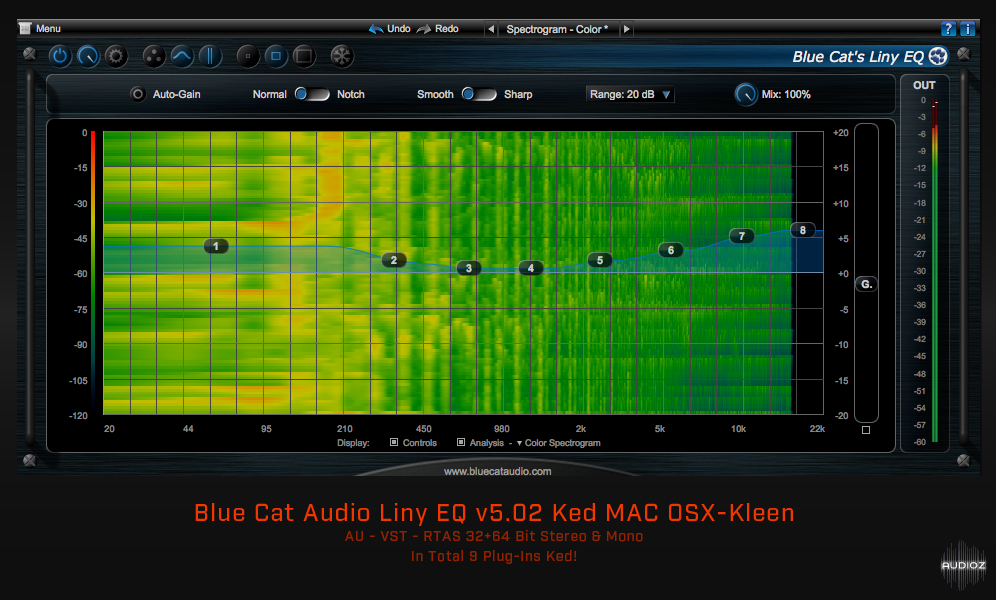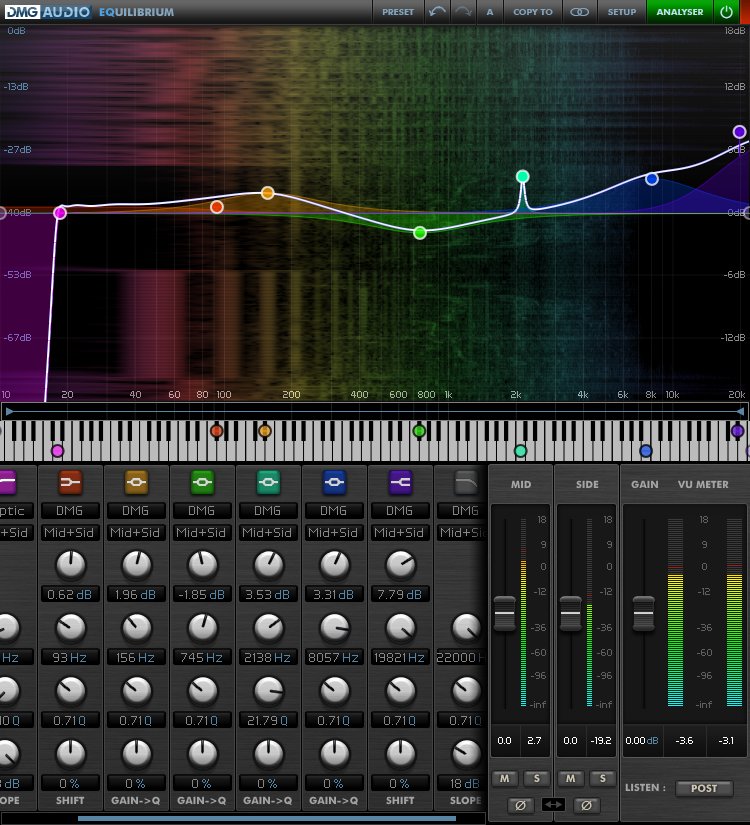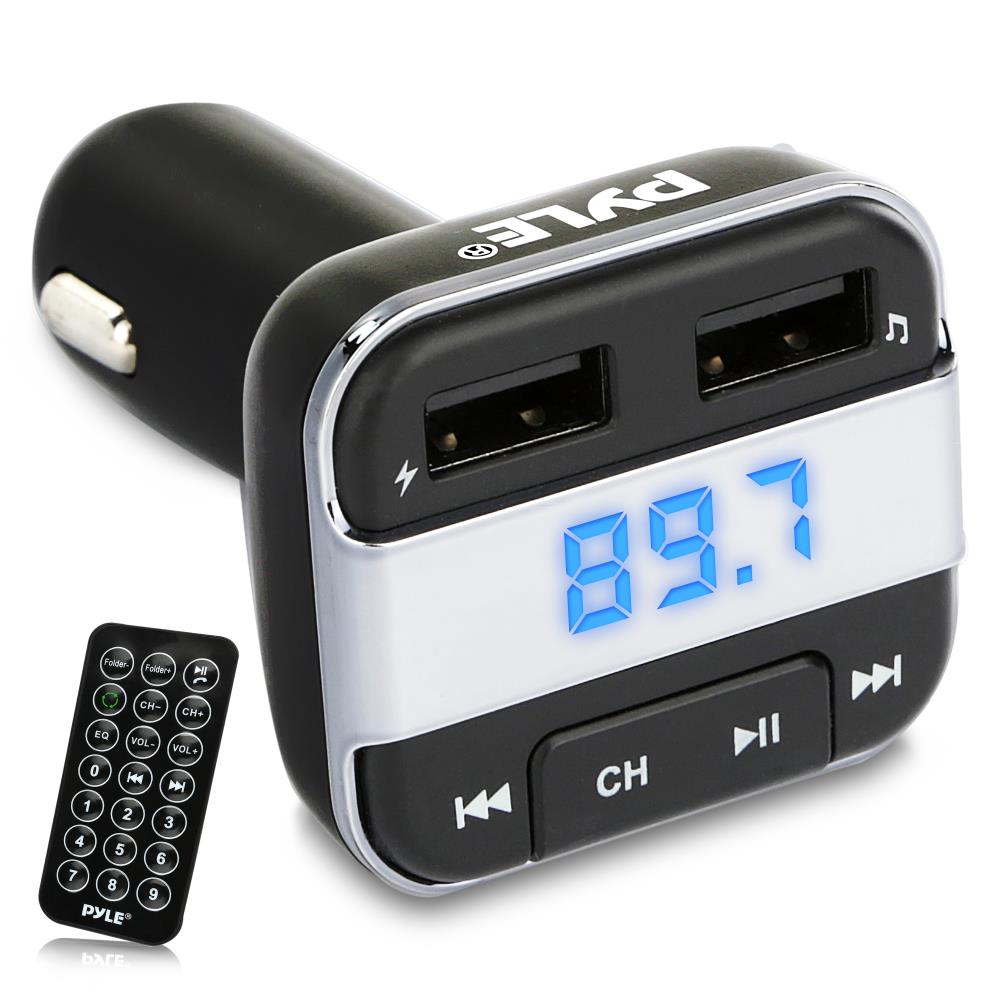- Sound Control is a unique application that adds advanced audio controls to your Mac. Control the audio of each of your apps independently with per-app volume, EQ, balance, and audio routing.
- It's designed to record audio from any source, including system audio. You do this by 'hijacking' the audio, and then recording. However, you can choose to simply hijack, and filter the audio, and not record. The app comes bundled with dozens of filters, and the one that works for me is the AudioUnit Effect Graphic EQ.
Part 1. Adjust Spotify Equalizer on Mobile Devices
Custom equalizer setting is a great option to personalize output Spotify audio tracks, which allows users to preset the audio settings to get favorite music sounds on devices. Equalizer for Spotify is available for both Android and iOS mobile apps. To change equalizer on Spotify, you don't need to download and use third-party software but for Spotify app only. Here's how you can enable an equalizer for Spotify on iOS and Android.
GarageBand for Mac: Use the EQ effect. You can graphically edit the Visual EQ effect. GarageBand patches include an EQ (equalizer) effect that is very useful for optimizing the sound of your tracks and projects. You can use the EQ effect on the master track to shape the sound of the overall project, and on individual tracks.
Spotify Equalizer on iOS
Eq For Mac Audio Editing
Step 1. Open Spotify app on your iPhone, navigate to Your Library tab in the lower-right corner and touch the Setting button at the top-right corner.
Step 2. In the setting window, you need to select Playback and then you will see there is an Equalizer option. Please tap the toggle to turn on the equalizer.
Step 3. You will see a list of preset equalizers for different types of music. In Spotify's case, 60Hz to 150Hz corresponds to the bass, 400Hz to 1KHz the midrange, and 2.4KHz to 15kHz to the treble. You can start to adjust the music preferences to the right one with best sounds by dragging the little white dots.
Step 4. When all settings are ready, just touch a preset to apply them, and you can get back to the home screen and listen to Spotify music in most suitable taste.
Spotify Equalizer on Android

If you don't use your Facebook account to sing up Spotify subscription, it could be easier to disconnect Spotify account from Facebook.
Step 1. Launch Spotify app on your Android phone. And you can hit on the 'Library' tab on your bottom-right hand corner to choose Setting option.
Step 2. In the Music Quality section, please scroll down to Equalizer button and click on it. It will pop up a prompt and you can just click OK to skip it.
Step 3. Android manufactures allows users to install and use your own equalizer instead of using Spotify's equalizer. You just need to choose the favorite equalizer to start adjusting music preferences.
Step 4. Please keep the Equalizer turned on and find which best suits you. When done, you can start to listen to nice audio quality on Spotify app.

GarageBand patches include an EQ (equalizer) effect that is very useful for optimizing the sound of your tracks and projects. You can use the EQ effect on the master track to shape the sound of the overall project, and on individual tracks.
The EQ effect includes the following features:
Eight independent color-coded EQ bands arranged from low (bass) to high (treble).
Preset settings optimized for different uses and for specific instruments.

An Analyzer that shows changes to the frequencies of a track as it plays. The Analyzer can help you to decide which frequencies to boost or cut.
Show the EQ effect

Eq Mac Audio
Click the Smart Controls button in the control bar to open the Smart Controls pane.
Click the EQ button in the Smart Controls menu bar.
If the patch doesn’t already contain an EQ plug-in, one is added after the last plug-in in the patch.
The EQ appears in the Smart Controls pane. In the center is the graphic EQ display. Across the top are colored symbols that identify each color-matched EQ band. On the bottom are the Analyzer button and the numeric displays of Frequency (Freq), Gain/Slope, and Q (Quality) for the selected EQ band.
Note: You can use more than one EQ effect in a patch, either by adding another EQ or by changing an existing effect plug-in to an EQ. When a patch has more than one EQ, only the first (highest) one appears in the Smart Controls EQ pane when you click the EQ button. You can open any other EQs in a separate plug-in window. Also consider the sonic difference you can achieve in your track or project when the EQ is moved up or down the effects slots. See Reorder effect plug-ins.
Tip: It is usually better to cut frequencies with the EQ rather than boost them, although the final test is how it affects the sound of your project. Cutting frequencies can help to avoid problems with levels between instruments that share the same frequency range, such as bass or tom tom drums and bass guitars. Also, its a good idea to use EQ subtly, rather than making radical changes. If a part needs significant EQ changes, then you may want to consider changing or replacing it.
Adjust EQ settings
Click an EQ band button to activate or deactivate it. Use only the bands you need to get your sound just right.
Band 1 On/Off button: Switch on a high pass filter. Drag the red control point in the EQ display to set the frequency value. Only frequencies above the frequency value can pass.
Band 1 control point: Drag up or down to raise or lower the level of band 1. Drag left or right to change the frequency.
Band 1 range: Drag the red shaded area left or right to change the band 1 frequency value.
Band 2 On/Off button: Switch on a low shelving filter that cuts or boosts frequencies below the set frequency. Drag the brown controls in the EQ display to adjust band 2 frequency and gain values.
Band 2 control point or range: Drag the brown control point (or the shaded area) to change the band 2 frequency and gain values.
Band 3 On/Off button: A parametric bell filter that cuts or boosts frequencies around the set frequency. Drag the yellow controls in the EQ display to adjust band 3 frequency and gain values.
Band 3 control point: Drag the yellow control point (or the shaded area) to change the band 3 frequency and gain values.
Band 4 On/Off button: A parametric bell filter that cuts or boosts frequencies around the set frequency. Drag the green controls in the EQ display to adjust band 4 frequency and gain values.
Band 4 control point: Drag the green control point (or the shaded area) to change the band 4 frequency and gain values.
Band 5 On/Off button: A parametric bell filter that cuts or boosts frequencies around the set frequency. Drag the aqua controls in the EQ display to adjust band 5 frequency and gain values.
Band 5 control point: Drag the aqua control point (or the shaded area) to change the band 5 frequency and gain values.
Band 6 On/Off button: A parametric bell filter that cuts or boosts frequencies around the set frequency. Drag the blue controls in the EQ display to adjust band 6 frequency and gain values.
Band 6 control point: Drag the blue control point (or the shaded area) to change the band 6 frequency and gain values.
Band 7 On/Off button: Switch on a high shelving filter that cuts or boosts frequencies above the set frequency. Drag the purple controls in the EQ display to adjust band 7 frequency and gain values.
Band 7 control point: Drag the purple control point (or the shaded area) to change the band 7 frequency and gain values.
Band 8 On/Off button: Switch on a lowpass filter. Drag the pink control point in the EQ display to set the frequency value. Only frequencies below the frequency value can pass.
Band 8 control point: Drag up or down to raise or lower the level of band 8. Drag left or right to change the frequency.
Band 8 range: Drag the pink shaded area left or right to change the band 8 frequency value.
EQ display: Shows the overall EQ curve. The color of each band matches the corresponding button above the display. Each colored band and curve (and corresponding Frequency, Gain/Slope, and Q field) is highlighted as you move the mouse pointer across it. To select a band for editing, click a curve line segment, the (center frequency) control point, or in the colored area.
Frequency field: Click a band in the EQ display to select it, then set the band’s center frequency value
Gain/Slope field: Click a band in the EQ display, then set the amount of boost or cut to the band’s frequencies. For bands 1 and 8, you set slope values that cut or boost quickly (high value) or more gently (low value).
Q field: Click a band in the EQ display to select it, then set the Q (for quality) factor to determine the shape of the selected range around the center frequency.
Note: When the Q parameter is set to an extremely high value, such as 100, these filters affect only a very narrow frequency band, and can be used as notch filters. You could use this to silence or reduce the level of a high hat cymbal in a drum loop, for example.
Gain slider: Set the overall output level of the signal. Use this after boosting or cutting individual frequency bands.
To turn off the EQ effect: Click the Power button in the Plug-ins area.
Mac Equalizer For Audio
System Wide Eq Mac
Change EQ settings
To choose different EQ settings: Choose a different item from the Setting pop-up menu in the Plug-ins area.
To save custom settings: Choose Save As from the Setting pop-up menu in the Plug-ins area, type a name for the customized settings, then click Save.
Use the Analyzer
Eq For Pc
Analyzer button: Click the Analyzer button, then play the project to view changes to the frequency curve. This can help you to decide which frequencies to boost or cut.
While the project plays, a realtime frequency curve for the track appears in the EQ display, showing which frequencies are louder or softer. You can adjust bands in the EQ display while watching changes to the frequency curve.
Note: Be sure to turn off the Analyzer when you’re not using it. When the EQ window is visible, the Analyzer uses additional processing power.
